 |
| August 15, 2023 | Volume 19 Issue 31 |
Mechanical News & Products
Designfax weekly eMagazine
Archives
Partners
Manufacturing Center
Product Spotlight
Modern Applications News
Metalworking Ideas For
Today's Job Shops
Tooling and Production
Strategies for large
metalworking plants
Copper foam -- so many advantages
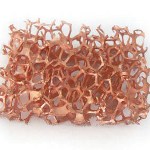 Copper foam from Goodfellow combines the outstanding thermal conductivity of copper with the structural benefits of a metal foam. These features are of particular interest to design engineers working in the fields of medical products and devices, defense systems and manned flight, power generation, and the manufacture of semiconductor devices. This product has a true skeletal structure with no voids, inclusions, or entrapments. A perennial favorite of Designfax readers.
Copper foam from Goodfellow combines the outstanding thermal conductivity of copper with the structural benefits of a metal foam. These features are of particular interest to design engineers working in the fields of medical products and devices, defense systems and manned flight, power generation, and the manufacture of semiconductor devices. This product has a true skeletal structure with no voids, inclusions, or entrapments. A perennial favorite of Designfax readers.
Learn more.
New torque inserts provide design flexibility
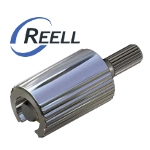 Reell's TI-330 torque insert completes the gap in torque range between the TI-320 and TI-340 models in the TI-300 series, providing enhanced design flexibility for a wider range of applications. With torque options ranging from 1.0 to 2.5 Nm, the TI-330 features a powdered metal package configuration designed to be press-fit into round holes for quick and easy installation. Mounting profile options include exposed knurled shaft end and a knurled zinc adapter for installation into plastics.
Reell's TI-330 torque insert completes the gap in torque range between the TI-320 and TI-340 models in the TI-300 series, providing enhanced design flexibility for a wider range of applications. With torque options ranging from 1.0 to 2.5 Nm, the TI-330 features a powdered metal package configuration designed to be press-fit into round holes for quick and easy installation. Mounting profile options include exposed knurled shaft end and a knurled zinc adapter for installation into plastics.
Learn more.
Superior fastening solution for securing rotating components to a shaft
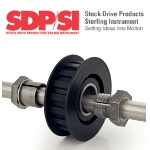 SDP/SI Shaftloc® fasteners offer distinct advantages over other fastening methods when securing rotating components to a shaft. The key to this compact, efficient design is its asymmetric thread geometry that produces a greater clamping force -- outperforming other fastening methods. Shaftloc is a patented fastening system manufactured by SDP/SI.
SDP/SI Shaftloc® fasteners offer distinct advantages over other fastening methods when securing rotating components to a shaft. The key to this compact, efficient design is its asymmetric thread geometry that produces a greater clamping force -- outperforming other fastening methods. Shaftloc is a patented fastening system manufactured by SDP/SI.
Learn more.
Great design: Handle with integrated lighting/signaling
 Signaling and indicator lights, switches, and buttons -- elements that hardly any machine can do without. The new JW Winco cabinet U-handle EN 6284 integrates all these functions into a single, compact element. The new U-handle is designed to enhance the operation of systems and machines. It features an integrated button and a large, colored, backlit area on the back of the handle. These elements can be used individually or in combination, providing a versatile tool for system control and process monitoring that can be seen from across the room.
Signaling and indicator lights, switches, and buttons -- elements that hardly any machine can do without. The new JW Winco cabinet U-handle EN 6284 integrates all these functions into a single, compact element. The new U-handle is designed to enhance the operation of systems and machines. It features an integrated button and a large, colored, backlit area on the back of the handle. These elements can be used individually or in combination, providing a versatile tool for system control and process monitoring that can be seen from across the room.
Learn more.
SOLIDWORKS: FeatureManager tips for assemblies
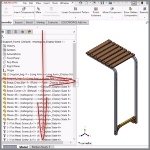 Discover tools to make your SOLIDWORKS assembly Feature-Manager design tree display easier to view and use. Learn options to limit the amount of information in each component listing, combine multiple instances of a component into a single listing, and separate fasteners mates into a new folder. Lots more tips on the SOLIDWORKS YouTube channel.
Discover tools to make your SOLIDWORKS assembly Feature-Manager design tree display easier to view and use. Learn options to limit the amount of information in each component listing, combine multiple instances of a component into a single listing, and separate fasteners mates into a new folder. Lots more tips on the SOLIDWORKS YouTube channel.
View the video.
Top die casting design tips: Xometry
 Optimize your die casting project's manufac-turability with these 23 top design tips from Xometry. Ensure your work is cost effective too, so you can hit the ground running and have the highest chance of success. Tips include: fillets and radii, wall thicknesses, ribs and metal savers, holes and windows, parting lines, finishes, and more.
Optimize your die casting project's manufac-turability with these 23 top design tips from Xometry. Ensure your work is cost effective too, so you can hit the ground running and have the highest chance of success. Tips include: fillets and radii, wall thicknesses, ribs and metal savers, holes and windows, parting lines, finishes, and more.
Read the Xometry article.
8 top ways to wreck your coupling-driven system
 Engineers at Ruland Manufacturing Co. have compiled the eight best ways to consistently sabotage or damage your coupling-driven system -- and how to avoid these pitfalls in the future. Misunderstanding performance criteria such as misalignment, torque, or rpm can be all it takes to cause a critical and costly failure.
Engineers at Ruland Manufacturing Co. have compiled the eight best ways to consistently sabotage or damage your coupling-driven system -- and how to avoid these pitfalls in the future. Misunderstanding performance criteria such as misalignment, torque, or rpm can be all it takes to cause a critical and costly failure.
Read the full article.
New washer tech for leak-free automotive sealing
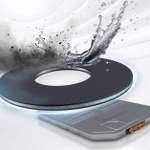 Trelleborg Sealing Solutions has just launched the Rubore® Washer, a unique solution offering virtually leak-free sealing beneath screwheads to safeguard critical systems in vehicles, especially electric ones.
Trelleborg Sealing Solutions has just launched the Rubore® Washer, a unique solution offering virtually leak-free sealing beneath screwheads to safeguard critical systems in vehicles, especially electric ones.
Read the full article.
How Reell electric wrap spring clutches work
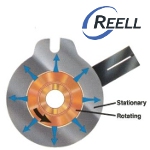 Electric wrap spring clutches are ideally suited for critical timing applications requiring consistent, repeatable engagement and disengagement performance. Wrap spring technology used in Reell clutches provides the capability to transmit a large amount of torque in a small size -- package sizes smaller than other clutch technologies such as friction disk, tooth, or magnetic particle. Reell's technology has very positive engagement characteristics and also limits the effects of wear.
Electric wrap spring clutches are ideally suited for critical timing applications requiring consistent, repeatable engagement and disengagement performance. Wrap spring technology used in Reell clutches provides the capability to transmit a large amount of torque in a small size -- package sizes smaller than other clutch technologies such as friction disk, tooth, or magnetic particle. Reell's technology has very positive engagement characteristics and also limits the effects of wear.
Read this informative Reell article.
New 'breathable' rupture disk tech provides overpressure and vacuum relief
 To increase equipment safety and reliability, a new rupture disk technology activates at a set burst pressure, but it can also "breathe" to relieve minor pressure fluctuations. The patent-pending, dual-function device from BS&B Safety Systems is ideal for use on low-pressure vessels that are susceptible to ambient temperature changes.
To increase equipment safety and reliability, a new rupture disk technology activates at a set burst pressure, but it can also "breathe" to relieve minor pressure fluctuations. The patent-pending, dual-function device from BS&B Safety Systems is ideal for use on low-pressure vessels that are susceptible to ambient temperature changes.
Read the full article.
Engineer's Toolbox: 9 considerations for specifying a slewing ring bearing
 In applications that require a bearing to support a structure while it rotates (e.g., cranes, radar, tank turrets), premature bearing failure can put people and equipment at risk. While slewing ring bearings have proven themselves countless times in such applications, designers must consider many factors when specifying them. According to engineers at Kaydon, the bearing's support structure, mounting (including bolt strength, tensioning, and hole patterns), installation, and even storage are all factors in a bearing's success or failure.
In applications that require a bearing to support a structure while it rotates (e.g., cranes, radar, tank turrets), premature bearing failure can put people and equipment at risk. While slewing ring bearings have proven themselves countless times in such applications, designers must consider many factors when specifying them. According to engineers at Kaydon, the bearing's support structure, mounting (including bolt strength, tensioning, and hole patterns), installation, and even storage are all factors in a bearing's success or failure.
Read the full article.
ClampDisk micro fastener is new alternative for automotive and consumer electronics
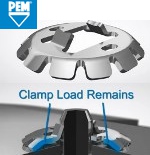 Designed as a unique alternative in assemblies for the automotive and consumer electronics markets, the ClampDisk Press-on Fastener is a new offering from PennEngineering that delivers a fast, simple way to achieve sheet-to-sheet clamped fastening while replacing the use of standard screws, nuts, and adhesives. The most common challenges that can be eliminated or reduced by using ClampDisk include over installation, cross threading, stripped screw heads, broken screws, and damaged product. This fastener can be removed easily with a sharp-edged tool.
Designed as a unique alternative in assemblies for the automotive and consumer electronics markets, the ClampDisk Press-on Fastener is a new offering from PennEngineering that delivers a fast, simple way to achieve sheet-to-sheet clamped fastening while replacing the use of standard screws, nuts, and adhesives. The most common challenges that can be eliminated or reduced by using ClampDisk include over installation, cross threading, stripped screw heads, broken screws, and damaged product. This fastener can be removed easily with a sharp-edged tool.
Learn more and see how ClampDisk works.
New nylon constant torque hinge
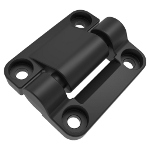 Southco has expanded its line of E6 Constant Torque Hinges with a compact, nylon version designed for small applications. The newest addition to the company's E6 50 Constant Torque Position Control Hinge series measures 45 mm with a torque range of 4 to 16 in./lb and is 65% lighter compared to the standard E6 50 Hinge. It provides constant resistance throughout the entire range of motion, enabling users to easily position doors, display screens, and other mounted components and hold them securely at any desired angle.
Southco has expanded its line of E6 Constant Torque Hinges with a compact, nylon version designed for small applications. The newest addition to the company's E6 50 Constant Torque Position Control Hinge series measures 45 mm with a torque range of 4 to 16 in./lb and is 65% lighter compared to the standard E6 50 Hinge. It provides constant resistance throughout the entire range of motion, enabling users to easily position doors, display screens, and other mounted components and hold them securely at any desired angle.
Learn more.
What injection molding material do I use?
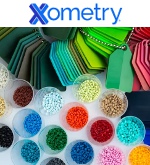 How do you decide what type of plastic to use for your next injection molding project? Xometry can help you narrow your choices. Discover the different strengths and applications for materials that could be ideal for your application by learning about the most common plastic injection molding materials in detail.
How do you decide what type of plastic to use for your next injection molding project? Xometry can help you narrow your choices. Discover the different strengths and applications for materials that could be ideal for your application by learning about the most common plastic injection molding materials in detail.
Read this detailed Xometry article.
What are carbon composite bellows springs?
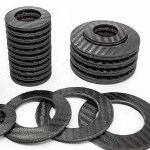 The Carbon Composite Bellows Spring (CCBS) from MW Components is a system of carbon fiber elements that combine to work as a high-performance, lightweight, and design-flexible compression spring meant to replace coil springs or metallic Belleville disc springs. A functional spring is made from several individual elements paired and joined to make a stack. The stack spring rate is determined by the number of elements, the base rate of each element, and their series or parallel orientation in the stack. Applications include motorsports, aerospace, and high-performance activities.
The Carbon Composite Bellows Spring (CCBS) from MW Components is a system of carbon fiber elements that combine to work as a high-performance, lightweight, and design-flexible compression spring meant to replace coil springs or metallic Belleville disc springs. A functional spring is made from several individual elements paired and joined to make a stack. The stack spring rate is determined by the number of elements, the base rate of each element, and their series or parallel orientation in the stack. Applications include motorsports, aerospace, and high-performance activities.
Learn more.
44 years ago: NASA Armstrong begins testing airplane winglets

The KC-135 with test winglets in flight in 1979 over the San Gabriel mountains, south of Edwards AFB. Flight tests showed drag in flight was reduced by as much as 7%. [Credits: NASA photo]
By Jim Skeen, NASA Public Affairs Specialist
It was 44 years ago this July that NASA began testing a technology that would become one of the agency's most visible and beneficial contributions to commercial aviation: winglets, the upturned ends of airplane wings.
This innovation was developed by NASA's Langley Research Center in Langley, VA. After testing this design in wind tunnels there, winglets proved to be effective in flight tests at what is now NASA's Armstrong Flight Research Center in Edwards, CA.
Winglets are designed to operate in the wingtip "vortex," a whirlpool of air that occurs at an airplane's wingtips. This whirlpool of air spirals back behind an airplane, resulting in drag. Winglets reduce that energy loss by stemming airflow down the wing and decreasing those wingtip whirlpools. By reducing wingtip drag, fuel consumption goes down and range is extended.
On July 24, 1979, the first winglet test flight took off from NASA Dryden Flight Research Center, now NASA Armstrong. The test program was a joint effort between NASA and the Air Force, which supplied the KC-135 Stratotanker aircraft, a modified version of the Boeing 707 jetliner. Over the course of 48 test flights, winglets proved to reduce wingtip drag, increasing fuel efficiency by 6 to 7%.
Winglets began appearing on commercial and business jets in the early 1990s. Since then, winglets, seen on roughly 10,000 jets, have saved over 10 billion gallons of fuel and have reduced CO2 emissions by over 130 million tons.
Published August 2023
Rate this article
View our terms of use and privacy policy

